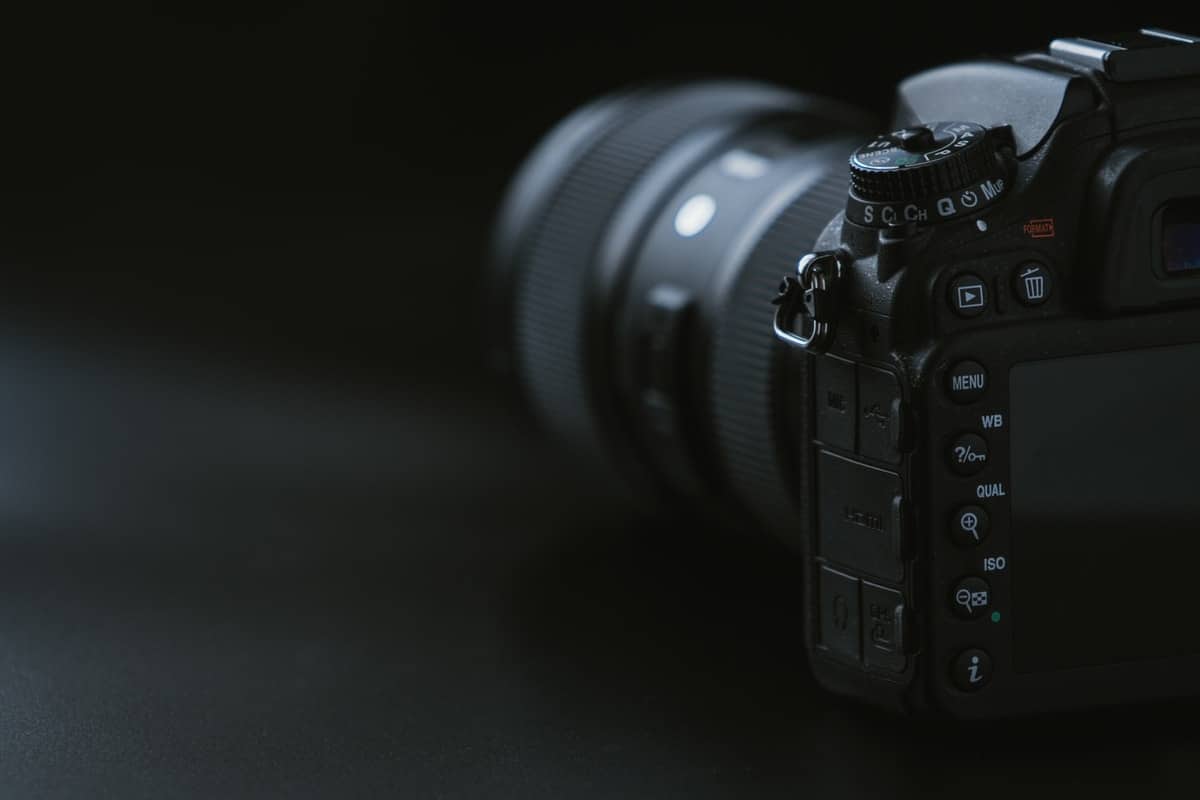Learn these photography abbreviations and fast track your understanding of cameras, shooting and printing, PDQ!
ISO, AWB, RGB…WTH? What does it all mean? Learning to shoot, edit and print beautiful images is hard enough without the need to decipher the many acronyms and photography abbreviations used by the industry. It feels a bit like falling into bowl of alphabet soup!
I hope this article can help decode and decipher some of the most common abbreviations you might encounter on your way to becoming an amazing photographer. It is not intended to be a complete glossary of photography terms or provide detailed explanations of all of these terms. But it should define them and give you a starting point for additional research!
Bookmark it for quick and easy reference!
What do the following stand for?
A
- AE: auto exposure. This is a camera’s automated system that determines and sets exposure by changing the aperture, shutter speed or ISO.
AE-L: auto exposure lock. Usually used on a button or menu function on a camera. - AF: AF stands for auto-focus. When using the auto-focus, you are letting the camera and lens find focus instead of manually adjusting it via the turning mechanism on your lens. There are different kinds of auto-focus, AF-C and AF-S.
- AF-C: AF-C is auto-focus continuous. It is also known as continuous servo. With AF-C your camera focuses on a subject but will continue to refocus on your subject as it moves, as long as your shutter button is held halfway down. Use AF-C when photographing moving objects like sports games, wildlife or fidgety toddlers.
- AF-S: AF-S stands for auto-focus single. This means the camera is locking the focus on a stationary object. You can then fire the shutter or recompose and take the shot. AF-S is used to photograph subjects that don’t move. It is often used in portrait, landscape and still life photography.
- AF-L: auto focus lock. Usually used on a button or menu function on a camera.
- ASP-C: Canon’s term for their smallest camera sensors, or crop sensors. The sensor is 22.3×14.9mm large.
- AWB: Auto white balance. Enabling auto white balance lets your camera read the light temperature in a scene and adjust its settings accordingly. See WB: White balance below for more information.
B
- BBF: BBF is an acronym for back button focus. You can customize many cameras now to use a button on the back of it to achieve and lock focus instead of holding your finger on the shutter halfway down. You’ll see this photography abbreviation often in discussions on focus or sharpness.
- B&W: black and white.
C
- CA: Chromatic abrasion. CA is basically color fringing, the discolored portions that appear alongside high contrast edges in an image. It is also known as dispersion.
- CC: Constructive criticism. Photographers will use this term when they want other photographers to critique an image.
- CF: CompactFlash. This term describes a memory card with high capacity and fast processing time. It has nothing to do with the lighting kind of flash.
- CMYK: CMYK is an acryonym for cyan, magenta, yellow and black. This is the standard for the printing industry.
D
- DNG: DNG stands for digital negative graphic, Adobe’s proprietary image standard, created to store images in a generic, highly compatible format. Some camera manufacturers such as Leica and Pentax have adopted this standard and use it for the raw image files coming out of their cameras. See the discussion on RAW files below.
- DOF: DOF means depth of field. It describes how much of your image is in focus from front to back of your scene. The size of that zone is determined by your aperture, lens, camera and distance from camera to subject.
- DPI: dots per inch, meaning technically how many printer dots per inch. Many photographers use this term interchangeably with PPI, or pixels per inch, although they are not actually the same. DPI is a printing term, PPI is a digital resolution term. You will see DPI or PPI used when discussing how to export images for printing.
- DSLR: digital single-lens reflex. In a DSLR camera body, a mirror reflects the light coming in from the lens up into an optical viewfinder, usually by means of a prism. This is why you can see what you’re shooting. DSLR cameras work similarly to 35mm cameras of old, except the image is recorded digitally instead of on film.
- DX: DX is Nikon’s name for their smallest sensor. The DX is the smallest sensor of Nikon DSLR cameras at 24x16mm. It is also called the crop-format.
Still unsure about depth of field? See our in-depth explanation of DOF!
E
- EF: EF is short for electro focus. This is Canon’s term for lenses that have an internal focusing motor. Canon EF lenses are compatible with all Canon EOS cameras and are designed to cover 35mm full-frame image circle.
- EF-M: Canon’s designation of lenses designed for use on mirrorless cameras.
- EF-S: Canon’s designation of lenses designed for use on cameras with an ASP-C sensor, or crop format.
- EOS: Eleoctro operating system. This is Canon’s marketing term for their auto-focusing system cameras and can be used to describe a mirrorless and DSLR camera.
- Exif: exchangeable image file format. Exif is another standard. It is used to describe the format for sounds, images and digital tags used by digital cameras and scanners. This data accompanies your image and tells the viewer things about how the image was shot, including the shutter speed, ISO, lens, camera brand, aperture and more. You will also see it printed as EXIF.
F
- FPS: Frames per second. This is how many unique images a camera can record in one second.
- F-Stop: This term is used to describe the numerical representation of the size of the aperture in the lens. This is known as the focal number, also called an f-stop, f standing for focal. You’ll see f-stops expressed numerically like f/2.8 or f/5.6.
- FX: FX refers to Nikon’s largest format. The Nikon FX is the largest sensor format of DSLR cameras at 36x24mm and most closely resembles a 35mm film format. It is also called full-frame. Photographers use the term full-frame to describe many brand’s largest format camera, not just Nikon.
H
- HDR: high dynamic range. In photography this term is most often used to describe a technique that aims to add more dynamic range to a photograph, meaning a bigger range of intensities of light from shadows to highlight. In HDR processing, three or more images taken at different exposures are combined during post processing. Digital software basically takes the best parts of each photograph and combines them into one image. The HDR image then has a greater dynamic range than any of the single images alone. HDR images more closely represent how a scene might appear to the human eye.
- HSS: high speed sync. This is a term used in flash photography. Instead of firing the flash at the start of the shot, HSS pulses the flash throughout the shot. Using HSS allows photographers to shoot flash at higher shutter speeds than they could with standard strobes or speedlights.
I
- IS: image stabilization. This technology compensates for camera shake (through mechanisms in the lens or the camera) allowing photographers to shoot at slower shutter speeds without blur than when shooting handheld. Each camera manufacturer offers some sort of stabilization technology. The exact mechanisms, how they function and what each is called varies by manufacturer. Below are the most common.
- Canon – IS, image stabilization
- Pentax – SR, shake reduction
- Nikon – VR, vibration reduction
- Sigma – OS, optical stabilization
- Sony – OSS, optical steady shot
- Tamron – VC, vibration compensation
- ISO: ISO is your camera’s sensitivity to light. It actually stands for International Organization of Standardization, although many modern photographers don’t know that. The International Organization of Standardization was a governing body responsible for standardizing sensitivity ratings for camera sensors (among other things. To date, the ISO has about 22,000 standards across industries of all kinds). In the days of film cameras, the ISO body would rate film’s sensitivity to light, giving it a speed and ASA. When the photography world made the switch to digital cameras, it retained the ISO standard to describe a digital sensor’s light sensitivity.
Want to learn more about ISO and how it affects your images? Click here!
J
- JPEG: JPEG is a method of compressing digital images. In photography, JPEG most often describes an image compressed according to a universal standard. Technically JPEG stands for Joint Photographics Expert Group, the body that created the file-squashing format. JPEG files usually have the file extension .jpg or .jpeg.
K
- K: Kelvin. In photography, Kelvin is a measurement unit of the color temperature of light sources. It is generally expressed with a number, like 2000K. The Kelvin scale ranges from 2000K to 9000K.
L
- LR: Lightroom. Adobe Lightroom is a software used by photographers to catalog and edit their photos.
M
- MF: manual focus.
- MP: megapixel. 1 megapixel is equivalent to 1 million pixels.
N
- NB: newborn. Some photographers specialize in photographing very young babies. In photography forums, a photographer might as “Who else is a NB pro?”
- ND: neutral density. In photography, the term ND describes filters that reduce the amount of light passing through them without altering the hue, color or polarization of the light.
- NR: noise reduction. Noise in photography refers to visual distortion in an image. Noise reduction can be accomplished through software in your camera or in post-production.
O
- OCF: off camera flash. OCF uses speedlights or strobes not physically attached to the camera via the on-board hotshoe.
- OOF: out of focus.
P
- Photog: photographer.
- PPI: Pixels per inch. See also DPI.
- PNG: PNG stands for Portable Networks Graphic. It is another system of digital file compression, similar to JPEG. Unlike JPEGs, however, PNGs do not lose quality when they are compressed. A PNG file is larger than its JPEG counterpart. PNGs are used almost exclusively on the web and not in print. The PNG format also allows an image to retain a transparent background. The file extension is usually written as .png.
- Post: short for post-production, meaning the work done to an image or video after it has been recorded by the camera. Photographers usually use this when referring to how an image was edited via digital software, as in “I adjusted the contrast and exposure in post.”
- PS: Adobe Photoshop, the high-end digital photograph editing software.
R
- RGB: Red, green blue. This is the system computer monitors and camera LCD screens use to display colors. Digital cameras record images in the RGB system.
- RAW: Raw is not technically an acronym or an abbreviation. Raw files are uncompressed and unedited, so named simply because nothing had been done them, similar to raw meat before it is cooked, ground or otherwise transformed. Photographers write the term as both raw and RAW, the latter leading people to believe it is an acronym of some sort. Adobe, along with most camera manufacturers, has its own proprietary raw file format, expressed as a unique file extension.
- Adobe – .DNG
- Canon – .CR2
- Nikon – .NEF
- Sony – .ARW
Why shoot RAW? We give you all the pros and cons!
S
- SD: Secure digital. Used to describe a type of small memory card used to store images and files. Phones, tables and some cameras like the GoPro take very small SD cards known as MicroSD cards. Memory cards also come in SDHC (secure digital high capacity) and SDXC (secure digital extended capacity). These terms all describe the same basic size and type of memory card but each is slightly different. Check your camera’s manual to see what type of memory card it can use.
- SOOC: straight out of camera. This means an image that has had no post-processing techniques applied to it. In discussions, the term SOOC discerns what techniques are accomplished in camera vs. what techniques are accomplished using digital editing software.
- SS: shutter speed. This is the time between when your shutter opens and closes. It is expressed in seconds or fractions of a second, such as 5, 3, 1, 1/200 or 1/1000.
T
- TIFF: tagged image file format. This file format is used for storing raster graphics and sometimes photographs. TIFF files do not lose quality when compressed. Photographers working in Photoshop or between Photoshop and Lightroom use TIFF files. Avoid using TIFFs because of their size. Some printing houses will require photographers to submit their images as TIFFs for printing. The file extension is .tif.
- TOG: short for photographer.
- TTL: through the lens. This term generally refers to a camera’s ability to “talk” to the flash and change the flash output automatically based on the availability of light. Think of TTL it as auto-flash.
W
- WB: White balance. White balance is the process of removing color casts from your images to make them look more natural.
X
- XQD: Another memory card format. This format is the successor of CF cards. XQD cards have very high speeds for reading and writing images. Many very fast shooting cameras use XQD cards to record and store images.
https://www.youtube.com/watch?v=qTApAv3v23s





![Portrait Camera Settings: Getting Great Shots Consistently [2020 Update]](https://colesclassroom.com/wp-content/uploads/2018/01/Port1-1-of-3-768x440.jpg)




